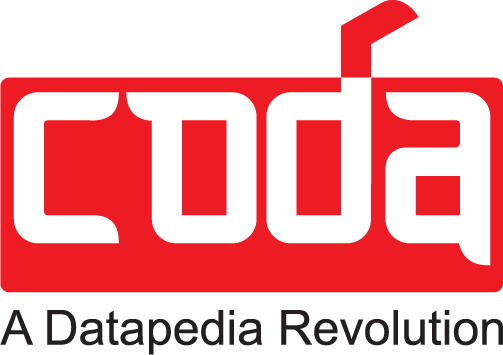Material master data plays a critical role in the broader framework of Master Data Management (MDM), particularly when it comes to ensuring the seamless operation of systems like SAP S/4HANA. Clean and compliant material data is not just beneficial, it’s essential for a successful SAP S/4HANA implementation.
Systems like Oracle and IBM Maximo are also valuable for centralizing data, enhancing quality, and improving integration across organizational operations. In this blog post, we will explore the importance of handling material master data efficiently, the advantages of maintaining data quality and compliance, the challenges organizations face, and how advanced solutions help address these complexities.
What is Material Master Data?
The material master database, often referred to as the “material master,” holds all the information an organization needs about the materials it purchases, manufactures, and retains. It serves as the core repository of material information, ranging from material descriptions and classifications to inventory levels and procurement details.
The integration of all material-related data into a single, centralized database prevents data redundancy, improves accuracy, and allows the data to be utilized across multiple business functions. Beyond purchasing, material data influences areas such as inventory management, material planning, and production control, all of which benefit from access to accurate and comprehensive information.
Why Data Quality and Compliance Matter for SAP S/4HANA Uploads
Effective data uploads are essential for the smooth operation of SAP S/4HANA. Inaccurate or inconsistent data can lead to problems ranging from inventory discrepancies to regulatory non-compliance. High-quality and compliant data ensures that information entered into the system is both correct and consistent, enabling smoother uploads and minimizing the risk of errors or regulatory issues.
Here’s how data quality and compliance serve SAP S/4HANA uploads efficiently:
Accuracy and Precision:
Clean material data prevents errors such as incorrect pricing, measurement units, or material descriptions. These inaccuracies can disrupt critical operations, including inventory management, procurement, and financial accounting.
Data Standardization:
SAP S/4HANA requires material data to conform to specific standards (e.g., consistent codes, naming conventions, and descriptions). Standardized data reduces upload errors and ensures seamless integration with other SAP modules.
Avoiding Data Duplication:
High-quality data ensures that duplicate records are avoided, minimizing errors caused by multiple entries for the same item. This reduces inefficiencies and discrepancies in reports.
Regulatory Compliance:
Compliant material master data includes the correct classifications, safety data, and regulatory-required features (e.g., hazardous material classifications). This ensures that organizations meet industry-specific compliance standards and avoid costly fines.
Smooth Integration Across Modules:
Well-maintained data enables efficient integration with other SAP modules like procurement, production planning, and sales. This supports improved cross-functional coordination.
Efficient Bulk Uploads:
Clean data allows for bulk uploads with fewer post-upload adjustments. This reduces migration costs and the time required for updates or initial SAP S/4HANA setups.
Leveraging Advanced SAP Features:
Clean and compliant material master data enables the use of advanced SAP S/4HANA capabilities, such as predictive maintenance and inventory optimization. These features rely on accurate data to deliver actionable insights and drive operational efficiencies.
How to Ensure Data Quality and Compliance for SAP S/4HANA Uploads
Organizations must focus on strategies that ensure data quality and compliance when migrating material master data to SAP S/4HANA. Here are several key strategies:
- Data Cleansing: Identify and eliminate duplicate, outdated, or incomplete records. Data cleansing ensures only relevant and accurate material data is transferred into SAP S/4HANA.
- Validation: Compare material data against source documents, regulatory requirements, and predefined rules to ensure its accuracy. This is crucial for preventing data integrity issues.
- Standardization: Align material data with SAP S/4HANA’s required naming conventions and templates. This ensures consistency across various modules and departments.
- Testing: Conduct test uploads before the final migration to detect potential issues in the data. Testing helps identify discrepancies and ensures a smooth upload process.
- Governance: Implement robust data governance policies to manage the material master data lifecycle, ensuring consistent quality over time. Establish clear rules and responsibilities for managing data.
Transform your business with high-quality, standardized master data. Learn more about Codasol’s ERP and master data management solutions.

The Benefits of Material Master Data in SAP S/4HANA
The material master data is integral to SAP S/4HANA’s Master Data Management (MDM) system. Having high-quality material master data unlocks numerous benefits that contribute to better operational performance and business outcomes.
Improved Data Quality and Accuracy:
SAP S/4HANA’s built-in validation processes ensure that only accurate, standardized data is accepted during uploads. This significantly reduces errors in procurement, production, and inventory management.
Regulatory Compliance:
Material master data in SAP S/4HANA ensures that organizations meet international and industry-specific regulations such as ISO and REACH. Compliance is facilitated by accurate classifications, certifications, and material properties, reducing the risk of penalties.
Better Decision-Making and Analysis:
Reliable material master data provides accurate insights into inventory levels, procurement needs, and production planning. These insights empower strategic decision-making, such as optimizing inventory levels and anticipating maintenance needs.
Cost Reduction:
Accurate supplier and material data streamline procurement processes, reduce errors, and prevent mismatched materials. This results in cost savings and more efficient operations.
Scalability and Adaptability:
Clean and standardized material master data makes system upgrades and migrations easier. It also facilitates the organization’s response to new market demands, product variations, and evolving regulatory requirements.
Challenges in Managing Material Master Data for SAP S/4HANA
While the benefits of high-quality material master data are clear, organizations face several challenges when implementing MDM for SAP S/4HANA. Some common hurdles include:
Data Quality Issues:
Inaccuracies in material descriptions, classifications, and key attributes can lead to disruptions in critical processes like procurement, inventory management, and manufacturing.
Lack of Standardization:
Variations in material codes, descriptions, and units of measure across departments can lead to difficulties in data retrieval and analysis, hampering decision-making.
Legacy Data Migration:
Migrating legacy material data to SAP S/4HANA can be like cleaning out an outdated storage system. Without proper data cleansing, old records may cause inconsistencies or disrupt the upload process.
User Training and Adoption:
Users accustomed to older systems may struggle to adapt to new SAP S/4HANA standards and practices. Proper training is essential for ensuring data is entered and managed correctly.
Real-Time Data Challenges:
Keeping material data up to date in real time—such as stock levels, lead times, and procurement status—can be challenging, especially when dealing with large volumes of data.
Strategies for Overcoming Data Management Challenges
Organizations can adopt several strategies to address the challenges associated with material master data management:
Data Governance Frameworks:
Establish a clear governance framework with defined roles, standards, and policies for material data management.
Advanced Tools and Automation:
Utilize tools like SAP Master Data Governance (MDG) and automation to streamline data management and reduce the risk of human error.
Data Cleansing Audits:
Regularly audit and cleanse data to maintain its accuracy and consistency.
User Training:
Train staff on SAP S/4HANA’s material data standards and best practices to ensure accurate data entry and management.
Data Monitoring:
Use dashboards and analytics to monitor the health of material master data and make continuous improvements.
The Role of Oracle and IBM Maximo in Master Data Management
Beyond SAP, Oracle and IBM Maximo are also essential tools for managing master data in various industries.
Oracle’s Role in Master Data Management:
Oracle’s MDM solutions offer centralized data repositories, ensuring that master data is clean, accurate, and consistent across business operations. Its integration capabilities allow businesses to synchronize data across different systems and applications, facilitating data consistency.
Oracle’s MDM is particularly beneficial for industries like banking, retail, and healthcare, providing tailored solutions to meet industry-specific governance and compliance requirements.
IBM Maximo’s Role in Master Data Management:
IBM Maximo focuses on asset management, helping organizations track and manage physical assets such as equipment and machinery. By integrating master data into maintenance schedules and operations, Maximo enables predictive maintenance and reduces operational risks.
IBM Maximo ensures data quality by offering tools for standardizing asset data and ensuring compliance with safety and environmental regulations.
Conclusion
Master data management, especially material master data is a cornerstone of organizational efficiency. Clean, standardized, and compliant material data helps unlock the full potential of systems like SAP S/4HANA, Oracle, and IBM Maximo.
By addressing challenges such as data quality issues, standardization gaps, and legacy data migration complexities, organizations can improve decision-making, enhance operational efficiency, and ensure regulatory compliance.
Investing in data governance, cleansing, and advanced technologies is not just a technical necessity, it’s a strategic move toward long-term competitiveness and business success.

Ready to enhance your SAP S/4HANA data quality and governance?


